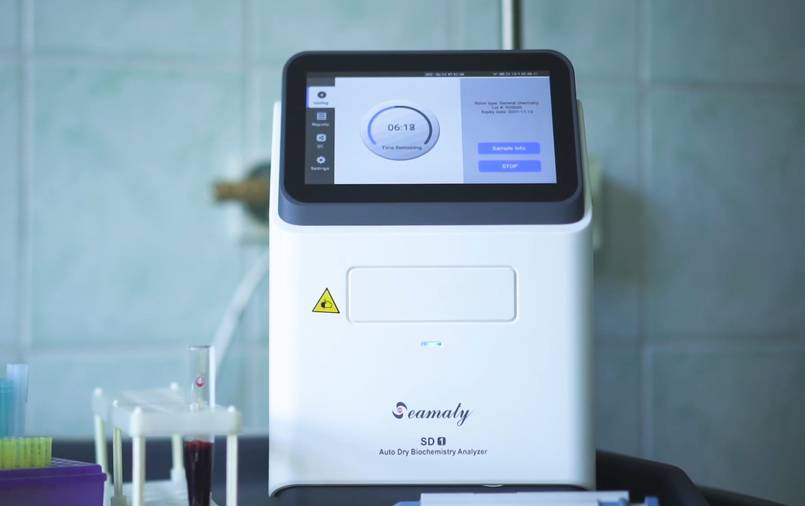Because their treatment is fairly simple and relatively straightforward. But many pet owners don't know this. If left untreated and allowed to develop, these infections can cause health problems. If they do not increase in mobility or weight, they can lead to a risk of zoonosis.
Although most owners are aware that their pets can become infected with parasites, especially when the animals are relatively young. However, there appear to be many misconceptions about the prevalence and screening for parasitic infections. These misconceptions come from owners, and many times veterinarians are reluctant to recommend testing. This is because many owners feel that checking for parasites is redundant, creating an undesirable cycle.
It is common for puppies and kittens to be tested for internal parasites. This is primarily because they are the most common category of infected pets. In fact, according to the Companion Animal Parasite Council (CAPC), samples collected across the United States show that more than 30 percent of 6-month-old dogs have canine Toxoplasma gondii or eggs. Because of this, many new owners make deworming a normal part of their puppy's life, just like the first round of vaccinations and spaying.
But this common perception is in some ways a double-edged sword. This is despite the fact that most puppy and kitten owners know that their pets should be dewormed at a young age. Because people know that puppies and kittens "have worms. But many people believe that once a dog or cat becomes an adult, the parasite danger goes away and no more testing is needed.
In many ways, owners are right: young animals with immature immune systems are most susceptible to parasitic infections. Since veterinarians do not always recommend parasite testing unless it is an annual physical exam (and not all annual exams include a fecal exam). Many owners believe that it is wise to do a fecal test to check for parasites only if the animal shows symptoms, such as parasites in the feces, or if it is clear that the dog has been exposed to an infected dog.
The U.S. Companion Animal Parasite Board recommends testing dogs at least four times at the age of one year and at least twice a year for adult dogs, with specific adjustments based on the animal's health and lifestyle, of course.
This frequency of testing is not common to some degree. Because most adult dogs and cats only go to the clinic once a year for a health check. And this is the most common scenario for fecal testing. Also, in low-risk households (i.e., those with strictly indoor pets with a low probability of parasitic infection), many veterinarians do not recommend more frequent testing unless there are signs of infection.
Recommending such frequent exams to owners may receive protests, especially if they know the dog has a history of deworming. Perhaps there were multiple dewormings at a young age and no symptoms were present. Aside from the fact that worms can be seen in the feces, some pet owners are not aware that there are other symptoms of parasitic disease or that their pets need treatment in the early stages of infection.
One exception is canine heartworm. Many dog owners have long been accustomed to regular testing and the use of monthly medications to prevent heartworm. It has become standard practice to test for heartworms annually and administer monthly medication until the test is negative. Dog owners are more aware of the dangers of heartworm and are able to prevent it. This is partly because heartworm treatment is expensive and the consequences of infection are serious, and there is a lot of information about heartworm propaganda. It is also because there are standard clinical protocols for heartworm treatment.
Intestinal parasites are generally not considered to be as serious as heartworm. Deworming medication for dogs and cats is also available in many pet stores, and the consequences of infection are relatively minor. Owners are also less inclined to continue to test their dogs and cats regularly as adults.
Many owners also believe that parasitic infections are related to geographic location. Examples include tick-borne diseases and heartworm disease. However, there are data showing that these types of parasites are not strongly correlated with geography and climate. Typically, it is thought that these parasites are associated with warm climates. These types of parasitic infections are only at risk in hot areas, but that's not entirely true.
In fact, many owners are unaware of how their pets become infected with intestinal parasites. Examples include roundworms, whipworms and tapeworms. These parasites can be transmitted through contaminated soil or contact with feces from an already infected animal, both of which are common in areas where there are multiple animals, such as parks and dog-walking fields.
Many people may also be unaware that intestinal parasitic diseases are zoonotic. Dogs and cats are clear hosts for a wide range of parasites that can cause infection in humans. If more people knew this, pet owners might feel more compelled to do bi-annual testing, whether their pets are symptomatic or not. This is especially true since many dog owners take dog feces from public places.
The industry should conduct more basic education efforts to make fecal testing biannual or at least annual. In addition, more information should be provided to pet owners about the dangers of tapeworms, roundworms and whipworms. Parasites remain a threat even after the animal reaches adulthood. Owners should also be encouraged to use broad-spectrum antiparasitics such as milbemycin, which protects against heartworm as well as roundworm, whipworm, and tapeworm.
In addition, it should be repeatedly emphasized that parasitic diseases are zoonotic, can be transmitted to humans relatively easily, and can lead to more serious consequences than in animals.


